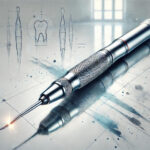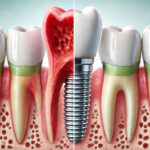Transcutaneous Electrical Nerve Stimulation (TENS) is a non-invasive pain relief method that has gained popularity in various medical fields, including dentistry. TENS therapy involves using a low-voltage electrical current to stimulate nerves and alleviate pain. This article explores the applications, benefits, and potential of TENS in dental pain relief.
How TENS Works
Mechanism of Action
TENS therapy works by delivering mild electrical impulses through electrodes placed on the skin near the area of pain. These impulses interfere with the transmission of pain signals to the brain, effectively blocking the sensation of pain. Additionally, TENS may stimulate the production of endorphins, the body’s natural painkillers, further reducing discomfort.
Equipment and Usage
A TENS unit typically consists of a small battery-operated device connected to electrodes. The electrodes are positioned on the skin near the painful area, and the device allows users to adjust the intensity and frequency of the electrical impulses. Treatment sessions usually last between 15 to 30 minutes, depending on the severity of pain and the treatment plan.
Applications of TENS in Dentistry
Managing Acute Dental Pain
TENS therapy is particularly effective in managing acute dental pain associated with procedures such as extractions, root canals, and periodontal surgeries. By applying TENS before, during, or after these procedures, patients can experience significant pain relief without the need for additional analgesics.
Alleviating Temporomandibular Joint (TMJ) Disorders
Temporomandibular joint (TMJ) disorders often cause chronic pain and discomfort in the jaw, face, and neck. TENS therapy can be used to relax the jaw muscles, reduce tension, and alleviate pain associated with TMJ disorders. Regular TENS sessions can help manage chronic TMJ pain and improve patients’ quality of life.
Reducing Postoperative Pain
After dental surgeries, patients frequently experience pain and swelling. TENS therapy can be an effective tool for managing postoperative pain, reducing the need for narcotic pain medications. The therapy helps in minimizing inflammation and promoting faster recovery, making the postoperative period more comfortable for patients.
Treating Oral Mucosal Pain
Oral mucosal pain, such as that caused by aphthous ulcers or other oral lesions, can be effectively managed with TENS. The therapy provides localized pain relief and accelerates the healing process by improving blood circulation in the affected area. Patients can use TENS as a complementary treatment alongside conventional therapies to alleviate discomfort.
Benefits of TENS in Dental Pain Relief
Non-Invasive and Drug-Free
One of the primary benefits of TENS therapy is that it is a non-invasive and drug-free method of pain relief. This makes it an attractive option for patients who prefer to avoid medications or who cannot take certain painkillers due to allergies or other health conditions.
Minimal Side Effects
TENS therapy has minimal side effects, especially when compared to pharmaceutical pain management options. Common side effects, such as skin irritation at the electrode site, are typically mild and easily manageable. The absence of significant side effects makes TENS a safe option for most patients.
Easy to Use
TENS units are user-friendly and portable, allowing patients to use them at home or on the go. This convenience enables patients to manage their pain effectively without frequent visits to the dentist or healthcare provider. The ability to adjust the settings also allows for personalized pain management.
Immediate Pain Relief
TENS therapy provides immediate pain relief, making it a valuable tool for managing sudden or severe dental pain. Patients can experience a noticeable reduction in pain within minutes of starting a TENS session, enhancing their comfort and well-being.
Potential and Future Directions
Integration with Dental Practice
As awareness of TENS therapy grows, more dental practices are likely to integrate it into their pain management protocols. Dentists can offer TENS as part of a comprehensive pain relief strategy, combining it with other treatments to provide holistic care. Training dental staff in the proper use of TENS devices will be crucial for successful implementation.
Advancements in TENS Technology
Advancements in TENS technology are continually improving its effectiveness and usability. Innovations such as wireless TENS units, smartphone-controlled devices, and more sophisticated electrode designs are making TENS therapy more accessible and convenient for patients. These advancements will likely increase the adoption of TENS in dental pain management.
Research and Evidence
Ongoing research into the efficacy of TENS therapy in dental pain relief will help establish its role in clinical practice. Studies exploring optimal treatment protocols, long-term benefits, and patient satisfaction will provide valuable insights and guide evidence-based practice.
Embracing TENS for Dental Pain Relief
TENS therapy offers a promising approach to managing dental pain, providing non-invasive, drug-free relief with minimal side effects. Its applications in acute dental pain, TMJ disorders, postoperative care, and oral mucosal pain make it a versatile tool for dentists and patients alike. As technology advances and research continues, the integration of TENS into dental practice will likely expand, offering patients a convenient and effective solution for pain management.










